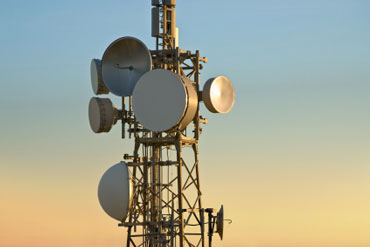January 26, 2017
The answer: that depends. Considerations include the Application(s) the customer intends to use, the locations, e.g., end points and the distance between them, and the need to mitigate potential obstructions, congestion and interference, are all factors to be taken into account for a successful RF design and installation.
As a non-engineer I like to apply a simple driving analogy to these challenges. I think of spectrum as the range of road types, from a narrow one way street to an eight lane super highway; frequency as the specific type of road; bandwidth/data rates as how wide the roads are; radios/antenna/gain as the engine/power; and application as the type of vehicle on the information highway. Toll roads are somewhat analogous to the licensed spectrum, and non-toll roads the unlicensed spectrum.
If I have the road to myself with a couple of wide lanes and a powerful engine I'll reach my destination quickly. However, if the roads are crowded, the lanes are narrow and I'm driving an electric car I might just get there tomorrow. Admittedly it's a gross over simplification, however it may facilitate an understanding in an otherwise often complex engineering description.
In the United States, regulatory responsibility for the radio spectrum is divided between the Federal Communications Commission (FCC) and the National Telecommunications and Information Administration (NTIA). The FCC, an independent regulatory agency, administers spectrum for non-Federal use (i.e., state, local government, commercial, private internal business, and personal use) and the NTIA, an operating unit of the Department of Commerce, administers spectrum for Federal use (e.g., use by the Army, the FAA, and the FBI). Within the FCC, the Office of Engineering and Technology (OET) provides advice on technical and policy issues pertaining to spectrum allocation and use.
Various wireless technologies utilize the 300MHz to 3GHz spectrum to accomplish different applications.
For instance, SCADA (Supervisory Control and Data Acquisition) and RFID (Radio Frequency Identification), utilize the 900 MHz frequency band. Both SCADA and RFID have low data rate requirements more suited to 900 MHz systems. Also, the 900 MHz frequency can be effective in making a connection in non-line-of-site (NLOS) environments. Utility monitoring and inventory control are popular applications utilizing the 900 MHz frequency band. A qualified RF design engineer will recommend the appropriate antenna type and necessary gain to maintain the connection.
The 2.4 GHz frequency band is used both at home and at work for Wi-Fi, Bluetooth, cordless phones, printers, and other wireless computer accessories. However the 2.4 GHz band can get very crowded and thus introduce interference in the way of dropped or spotty connectivity.
WiFi access points using the 802.11n standard use both the 2.4 and 5 GHz frequency bands, however the newer 802.11ac standard uses only 5 GHz. The applications and user density will set the parameter for the best decision for WiFi hardware and frequency selection. Many times 5 GHz is used as a backhaul link connecting two 2.4 GHz systems. The requirement for data throughput is also part of the equation and consumers have an insatiable appetite for bandwidth thus an integral part of the RF design.
Some locations, typically cities, are so congested with 2.4 and 5GHz frequencies that the best option for customers is to deploy licensed frequencies in order to be interference free. Direct Network Services recommends licensed band radio connectivity in urban areas when connectivity is crucial and interference in license free frequencies is probable.
Further discussion of the unlicensed and licensed bands, the public safety frequency band and the higher frequency bands of 20 GHz to 300 GHz will be addressed in future posts. Contact info@directnetserv.com or 978-952-6000 for RF design and professional services.
